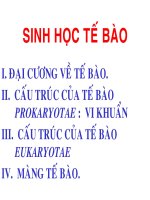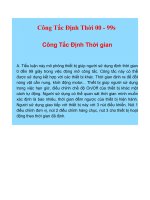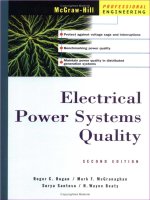C731 00
Bạn đang xem bản rút gọn của tài liệu. Xem và tải ngay bản đầy đủ của tài liệu tại đây (12.88 KB, 2 trang )
Designation: C 731 – 00
Standard Test Method for
Extrudability, After Package Aging, of Latex Sealants1
This standard is issued under the fixed designation C 731; the number immediately following the designation indicates the year of
original adoption or, in the case of revision, the year of last revision. A number in parentheses indicates the year of last reapproval. A
superscript epsilon (e) indicates an editorial change since the last revision or reapproval.
6. Apparatus
6.1 Caulking Gun, air-powdered.
6.2 Polyethylene Cartridge, 6 fluid oz. and plunger.
6.3 Polyethylene Cartridge Nozzle, 64 mm (21⁄2 in.) in
length with 3-mm (1⁄8-in.) orifice.
6.4 Air Compressor, capable of producing 50 psi (0.34
MPa).
6.5 Freezer, capable of maintaining − 17 6 1°C (0 6 2°F).
6.6 Circulating Air Oven, capable of maintaining 50 6 1°C
(122 6 2°F).
6.7 Stop Watch, standard laboratory.
6.8 Analytical Balance, accurate to 1 g.
6.9 Jar, approximately 0.5 L (1-pt).
6.10 Spatula.
1. Scope
1.1 This test method covers a laboratory procedure for the
determination of extrudability of latex sealants after freezethaw and heat cycling.
1.2 The values stated in metric (SI) units are to be regarded
as the standard. The values given in parentheses are for
information only.
1.3 This standard does not purport to address all of the
safety problems, if any, associated with its use. It is the
responsibility of the user of this standard to establish appropriate safety and health practices and determine the applicability of regulatory limitations prior to use.
NOTE 1—Currently there is no ISO standard similar to this test method.
2. Referenced Documents
2.1 ASTM Standards:
C 717 Terminology of Building Seals and Sealants2
7. Sampling
7.1 After conditioning as specified in 8.1, take the sealant to
be tested directly from a container as commercially supplied by
the manufacturer.
3. Terminology
3.1 Definition—Refer to Terminology C 717 for definitions of the following terms used in this test method: latex
sealant, sealant.
8. Conditioning
8.1 Subject the sealant in its original container to 5 freezethaw cycles, each cycle consisting of 16 h at − 176 1°C (0 6
2°F) and 8 h at 23 6 1°C (73.46 2°F), followed by 7 days at
50 6 1°C (122 6 2°F).
8.2 Condition the sealant which is still in its original
container, for a minimum of 5 days at 23 6 1°C (73.4 6 2°F)
and 50 6 5 % relative humidity.
8.3 Condition the polyethylene cartridge for a minimum of
16 h at the same conditions as specified in 8.2.
4. Summary of Test Method
4.1 After being subjected to 5 freeze-thaw cycles followed
by 7 days of heat aging, the sealant is extruded under pressure
from an air-powered caulking gun, and the extrudability is
measured in grams per second.
5. Significance and Use
5.1 Extrudability measurements of latex sealants serve to
indicate only their ease of application; they do not predict the
performance capability of the compound after installation.
5.2 This test method also measures freeze-thaw and heat
stability of such sealants.
9. Procedure
9.1 After conditioning, transfer the sealant from its container into the polyethylene cartridge either by gunning or with
the spatula. Avoid trapping air in the sealant during transfer.
9.2 Place the filled cartridge in the air-powered caulking
gun and attach the cartridge nozzle.
9.3 Weigh the jar and record its tare weight.
9.4 Gun the entire contents of the cartridge at 0.34 MPa (50
psi) into the empty, tared, jar, using a stop watch to time the
extrusion.
9.5 Weigh the jar containing the sealant.
1
This test method is under the jurisdiction of ASTM Committee C24 on Building
Seals and Sealants and is the direct responsibility of Subcommittee C24.20 on
General Sealant Standards.
Current edition approved June 10, 2000. Published June 2000. Originally
published as C 731 – 72. Last previous edition C 731 – 93a.
2
Annual Book of ASTM Standards, Vol 04.07.
Copyright © ASTM International, 100 Barr Harbor Drive, PO Box C700, West Conshohocken, PA 19428-2959, United States.
1
C 731 – 00
TABLE 1 Precision and Bias DataA
Material
Average
Estimated
Standard
Deviation
Within a
Laboratory
G1
G2
G3
14.92
14.57
14.82
0.29
0.58
0.83
t
Estimated
Standard
Repeatability
Deviation
Reproducibility
(Internal)
Between
Laboratories
4.36
3.36
3.71
0.81
1.64
2.36
11. Report
11.1 Report the rate of extrudability in grams per second.
12. Precision and Bias 3
12.1 Precision—The precision calculations for this test
method are based on the results of five laboratories testing
three materials, each in duplicate. The results are given in Table
1.
12.2 Bias—Since there is no accepted reference material
suitable for determining the bias for this test method for
extrudability, bias has not been determined.
12.33
9.50
10.49
A
At 95 % confidence a variation of as much as 2.36 g/s can be expected within
a laboratory and 12.33 g/s between laboratories.
10. Calculation
10.1 Calculate the weight of sealant extruded by subtracting the tare weight of the jar from the weight obtained in
9.5.
10.2 Calculate the rate of extrudability as follows:
Rate of extrudability 5 w/t
= elapsed time, s.
13. Keywords
13.1 extrudability; freeze-thaw stability; heat stability; latex
sealant
(1)
where:
w = weight of compound extruded, g, and
3
Supporting data is available from ASTM. Request RR:C24-1017.
ASTM International takes no position respecting the validity of any patent rights asserted in connection with any item mentioned
in this standard. Users of this standard are expressly advised that determination of the validity of any such patent rights, and the risk
of infringement of such rights, are entirely their own responsibility.
This standard is subject to revision at any time by the responsible technical committee and must be reviewed every five years and
if not revised, either reapproved or withdrawn. Your comments are invited either for revision of this standard or for additional standards
and should be addressed to ASTM International Headquarters. Your comments will receive careful consideration at a meeting of the
responsible technical committee, which you may attend. If you feel that your comments have not received a fair hearing you should
make your views known to the ASTM Committee on Standards, at the address shown below.
This standard is copyrighted by ASTM International, 100 Barr Harbor Drive, PO Box C700, West Conshohocken, PA 19428-2959,
United States. Individual reprints (single or multiple copies) of this standard may be obtained by contacting ASTM at the above
address or at 610-832-9585 (phone), 610-832-9555 (fax), or (e-mail); or through the ASTM website
(www.astm.org).
2









